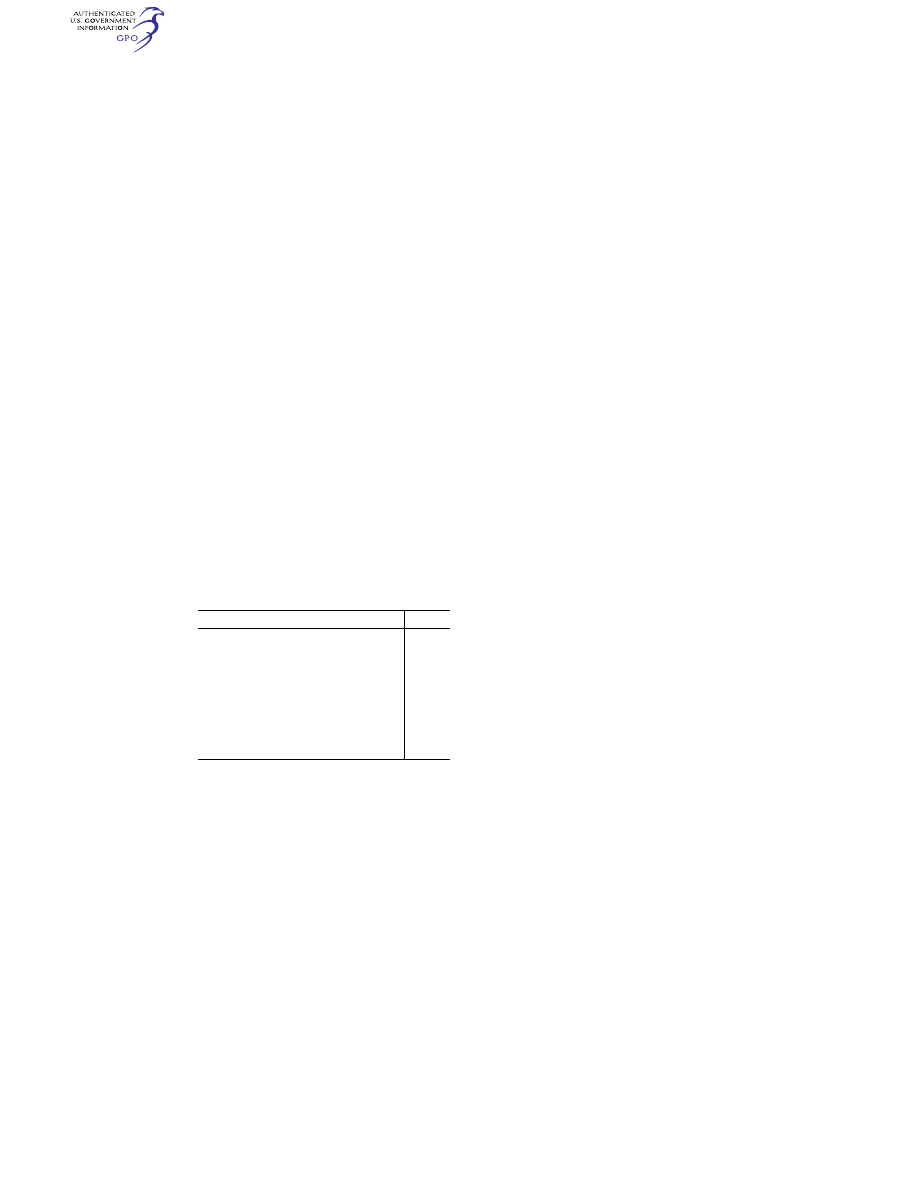
343
Federal Aviation Administration, DOT
§ 125.209
§ 125.207 Emergency equipment re-
quirements.
(a) No person may operate an air-
plane having a seating capacity of 20 or
more passengers unless it is equipped
with the following emergency equip-
ment:
(1) One approved first aid kit for
treatment of injuries likely to occur in
flight or in a minor accident, which
meets the following specifications and
requirements:
(i) Each first aid kit must be dust
and moisture proof and contain only
materials that either meet Federal
Specifications GGK–391a, as revised, or
as approved by the Administrator.
(ii) Required first aid kits must be
readily accessible to the cabin flight
attendants.
(iii) Except as provided in paragraph
(a)(1)(iv) of this section, at time of
takeoff, each first aid kit must contain
at least the following or other contents
approved by the Administrator:
Contents
Quantity
Adhesive bandage compressors, 1 in ...................
16
Antiseptic swabs ....................................................
20
Ammonia inhalants ................................................
10
Bandage compressors, 4 in ..................................
8
Triangular bandage compressors, 40 in ...............
5
Arm splint, noninflatable ........................................
1
Leg splint, noninflatable .........................................
1
Roller bandage, 4 in ..............................................
4
Adhesive tape, 1-in standard roll ..........................
2
Bandage scissors ..................................................
1
Protective latex gloves or equivalent nonper-
meable gloves ....................................................
1
1
1
Pair.
(iv) Protective latex gloves or equiv-
alent nonpermeable gloves may be
placed in the first aid kit or in a loca-
tion that is readily accessible to crew-
members.
(2) A crash axe carried so as to be ac-
cessible to the crew but inaccessible to
passengers during normal operations.
(3) Signs that are visible to all occu-
pants to notify them when smoking is
prohibited and when safety belts
should be fastened. The signs must be
so constructed that they can be turned
on and off by a crewmember. They
must be turned on for each takeoff and
each landing and when otherwise con-
sidered to be necessary by the pilot in
command.
(4) The additional emergency equip-
ment specified in appendix A of this
part.
(b)
Megaphones.
Each passenger-car-
rying airplane must have a portable
battery-powered megaphone or mega-
phones readily accessible to the crew-
members assigned to direct emergency
evacuation, installed as follows:
(1) One megaphone on each airplane
with a seating capacity of more than 60
and less than 100 passengers, at the
most rearward location in the pas-
senger cabin where it would be readily
accessible to a normal flight attendant
seat. However, the Administrator may
grant a deviation from the require-
ments of this paragraph if the Adminis-
trator finds that a different location
would be more useful for evacuation of
persons during an emergency.
(2) Two megaphones in the passenger
cabin on each airplane with a seating
capacity of more than 99 and less than
200 passengers, one installed at the for-
ward end and the other at the most
rearward location where it would be
readily accessible to a normal flight
attendant seat.
(3) Three megaphones in the pas-
senger cabin on each airplane with a
seating capacity of more than 199 pas-
sengers, one installed at the forward
end, one installed at the most rearward
location where it would be readily ac-
cessible to a normal flight attendant
seat, and one installed in a readily ac-
cessible location in the mid-section of
the airplane.
[Doc. No. 19779, 45 FR 67235, Oct. 9, 1980, as
amended by Amdt. 125–19, 59 FR 1781, Jan. 12,
1994; Amdt. 125–22, 59 FR 52643, Oct. 18, 1994;
59 FR 55208, Nov. 4, 1994]
§ 125.209 Emergency equipment: Ex-
tended overwater operations.
(a) No person may operate an air-
plane in extended overwater operations
unless it carries, installed in conspicu-
ously marked locations easily acces-
sible to the occupants if a ditching oc-
curs, the following equipment:
(1) An approved life preserver
equipped with an approved survivor lo-
cator light, or an approved flotation
means, for each occupant of the air-
craft. The life preserver or other flota-
tion means must be easily accessible to
each seated occupant. If a flotation
means other than a life preserver is
used, it must be readily removable
from the airplane.
